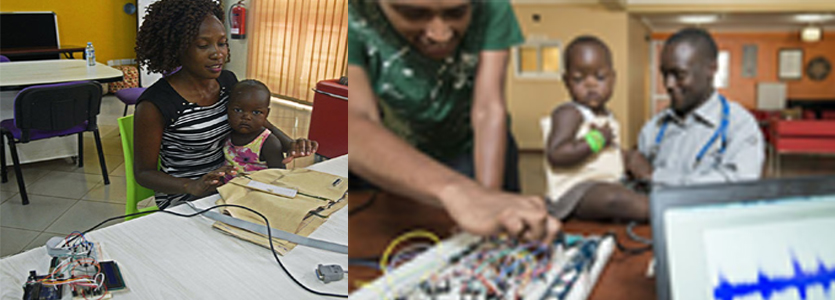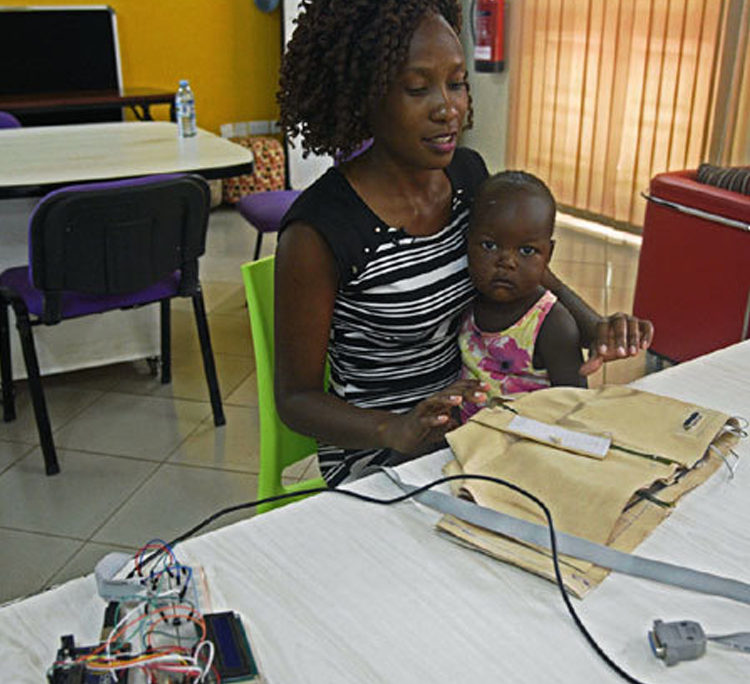This Smart Jacket Could Save Millions Of Children’s Lives
November 12th was World Pneumonia Day. The annual event is dedicated to raising the awareness about pneumonia, the leading killer of children under the age of five.
According to the World Health Organization, pneumonia is one of the most solvable problems in global health, and yet a child dies from the infection every 20 seconds. When correctly diagnosed, pneumonia can be treated with a 3- to 5-day course of antibiotics that costs just $0.40, states Save The Children.
But pneumonia often goes undiagnosed, or misdiagnosed, until it’s too late. Diagnostic equipment and doctors are scarce in many remote areas. In sub-Saharan Africa, more than 490,000 children under-five died from the disease in 2015. Community health workers often lack training, and postnatal care is minimal at best. A team of recent engineering graduates has devised a way to use sensors, analytics, and Bluetooth technology to diagnose pneumonia.
A wearable medical device:
Graduates Olivia Koburongo, Besufekad Shifferaw, and Brian Turyabagye from Makere University, Uganda, set out to create a diagnostic tool after seeing the results of a missed pneumonia diagnosis: Ms. Koburongo lost her grandmother to the illness that doctors initially thought was malaria.
While not uncommon in the elderly, this illness affects children disproportionally. Globally, pneumonia claimed the lives of 920,126 children in 2015 alone.
“Many of those deaths are because of misdiagnosis,” says Turyabagye. “In the villages and remote areas, children get sick – and the first reaction is to treat them for malaria. Most people are aware of malaria, and the signs for malaria and pneumonia are very similar, so it is difficult for health professionals to differentiate.”
The team designed a biomedical smart jacket that would analyze the patient’s temperature, breathing rate, and the wheezing sound in the lungs. Impressive technology, the jacket can diagnose pneumonia three to four times faster than a doctor. It can lessen the burden on medical professionals in a region that faces an extreme shortage of trained doctors.
According to CNN, “It surveys specific points on the lungs for symptoms of pneumonia, characterised by a swelling of the lungs caused by infection.”
“We use MATLAB signal analysis functions to analyze the data collected by the device. It helps filter and identify abnormal patterns,” explained Turyabagye. “The analysis determined parameters that were crucial to the project. These parameters guided the implementation stages, such as the design of the filter and amplifier circuits.”
This wearable medical device could save millions of lives
“The problem we’re trying to solve is diagnosing pneumonia at an early stage before it gets severe and we’re also trying to solve the problem of not enough manpower in hospitals because currently we have a doctor to patient ratio which is one to 24,000 in the country,” said Koburongo.
The team is currently working to have the device certified in Uganda. Once certified by the regulatory authority, the team intends to produce and supply the jacket to countries in East Africa.
“Really, we are looking to help the next generation,” Turyabagye said. “Pneumonia has such a high rate in Uganda and our neighbouring countries, if we were able to distribute in those countries we could save a lot of people.”


